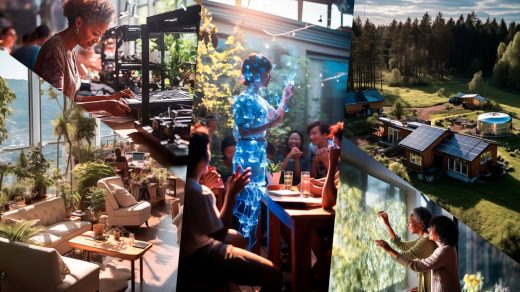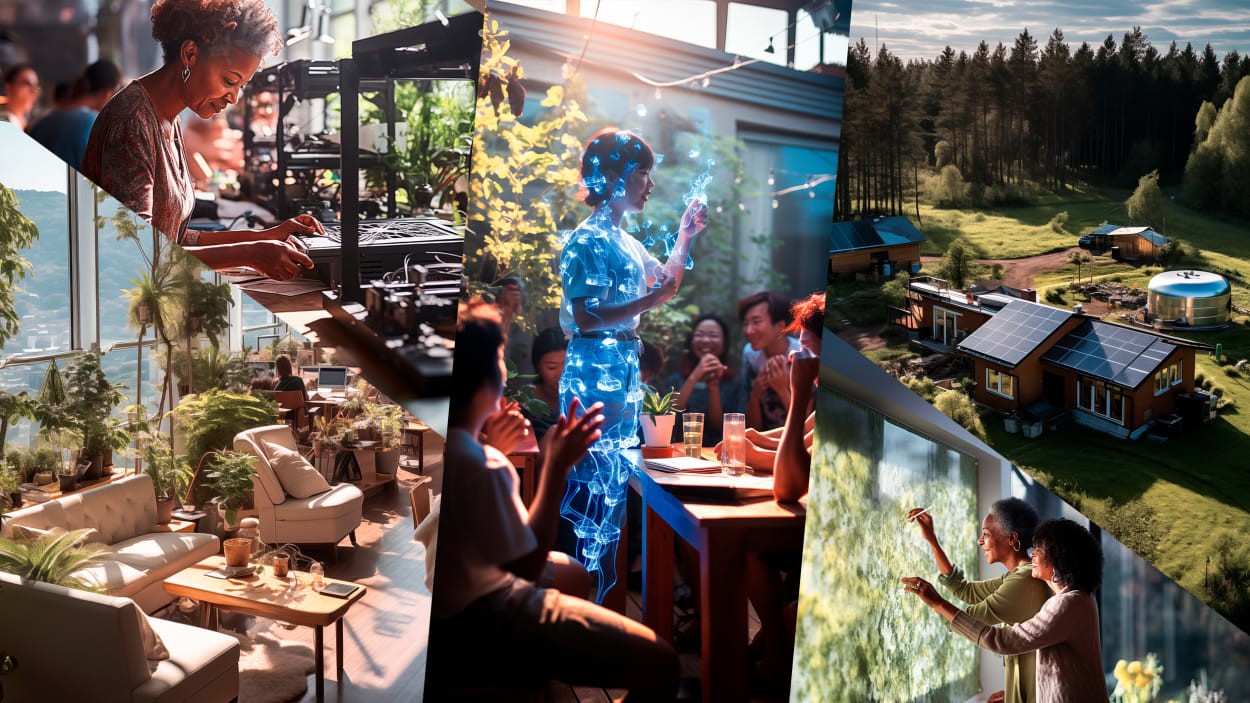Algae wallpaper, pod homes, and mushroom furniture: Ikea’s predictions for life in 2030 are semi-apocalyptic
By Mark Wilson
Fires, floods, and modern artificial intelligence tools that could take our jobs if they don’t wreck democracy first. War, pandemic, and bus loads of migrant people with nowhere to go. It can be difficult to dream about a future filled with so much consequence. But Ikea insists that life may really be OK on the other side—and it’s offering three unique portraits of life in 2030 to demonstrate how.
This futurecasting is part of Ikea’s tenth annual Life at Home Report, the company’s gargantuan annual survey of how people around the world live, and particularly what they enjoy, expect, and need in their home. The report is both a state of the union for how we live today, and a chance for Ikea to extrapolate today’s trends into those of the future.
For 2023, the company talked to over 37,000 people across 38 countries and found that we’re mostly worried about our finances and our health. Our values often clash with our means: 48% of people claimed the rising cost of living makes it too expensive for them to do more to respond to climate change, while 20% of us would like to grow our own food and harvest our own energy. Meanwhile, academics, consultants, and researchers weighed in on what they imagine might happen next, too.

“No one knows exactly what the future will be, so we think about what are some of the potential trajectories that look different,” says Ikea’s Global Foresight Lead, Maria Jeansson. What does unify Ikea’s projections are two unsettling trends: An increasingly unpredictable environmental and political climate, and AI systems that prove more adept at doing human jobs every day.
“[These are] not a dystopic future or an optimistic future, they are a quiet mix, with things that both might be viewed as positives and some that might be viewed as negatives—which make them a bit more full as futures, and show a way people [may] dealt with volatility in the market and climate crisis. Hopefully it helps people dream about the future as well.”
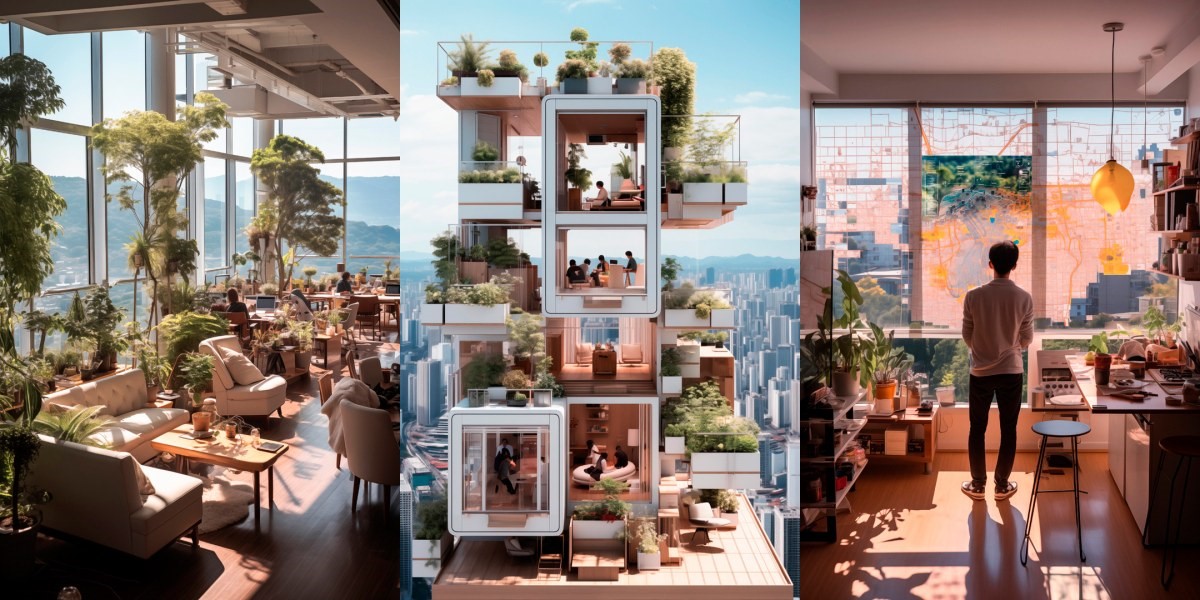
The home on the go
Ikea’s first vision for life in 2030 is the “home on the go.” “What is home when it does not become a permanent point?” muses Jeansson. The concept focuses on a young man named Jin who lives in Seoul on the coast, but due to flooding, has been temporarily displaced to a pod apartment in the highlands.
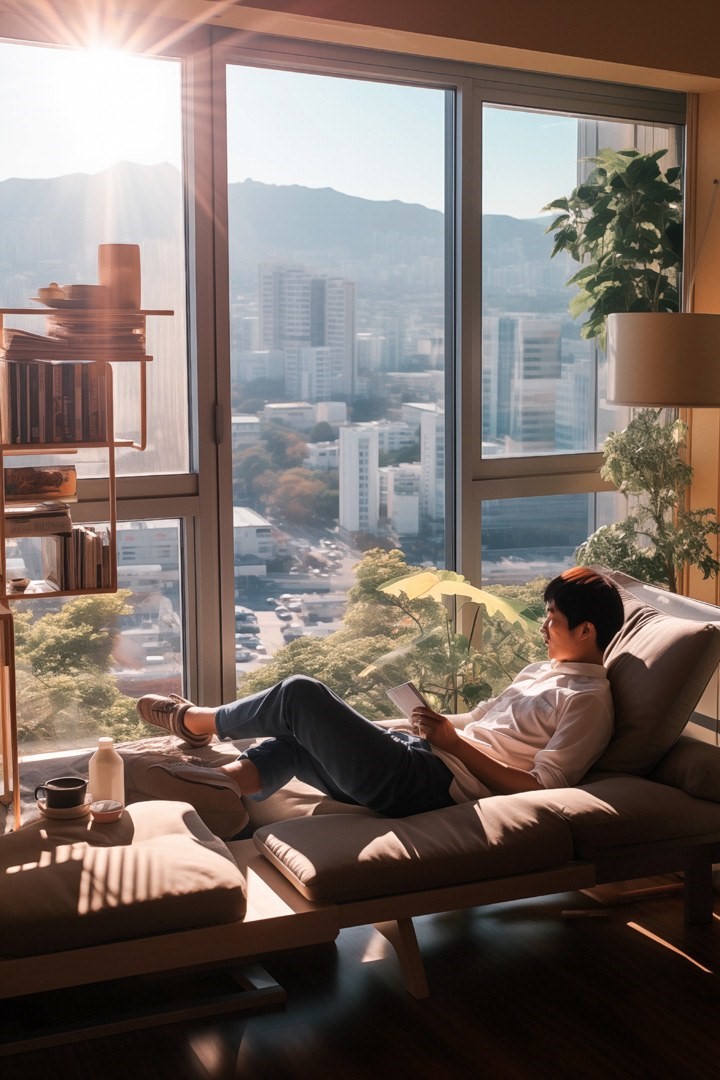
Jin is used to relocating to escape water and heat waves (and already, we see “sponge cities” that are being designed to flood). He moves often because his work leases pods across the globe, and most of his work and socialization is done online. For him, the sense of home is a “personalized AI advisor.” It manages the expenses and complexity of traveling when borders open and close sporadically, and provides “what we’d see as an artificial sense of belonging,” says Jeansson. “The home becomes that safety and security cocoon and you become reliant on the digital infrastructure and systems.”
If this concept sounds a lot like what we experienced during the pandemic, when online video games and connected exercise on Zwift became the status quo of our social lives, that’s only because it is. Jeansson says that this vision is in line with those findings from the Ikea’s 2021 report.
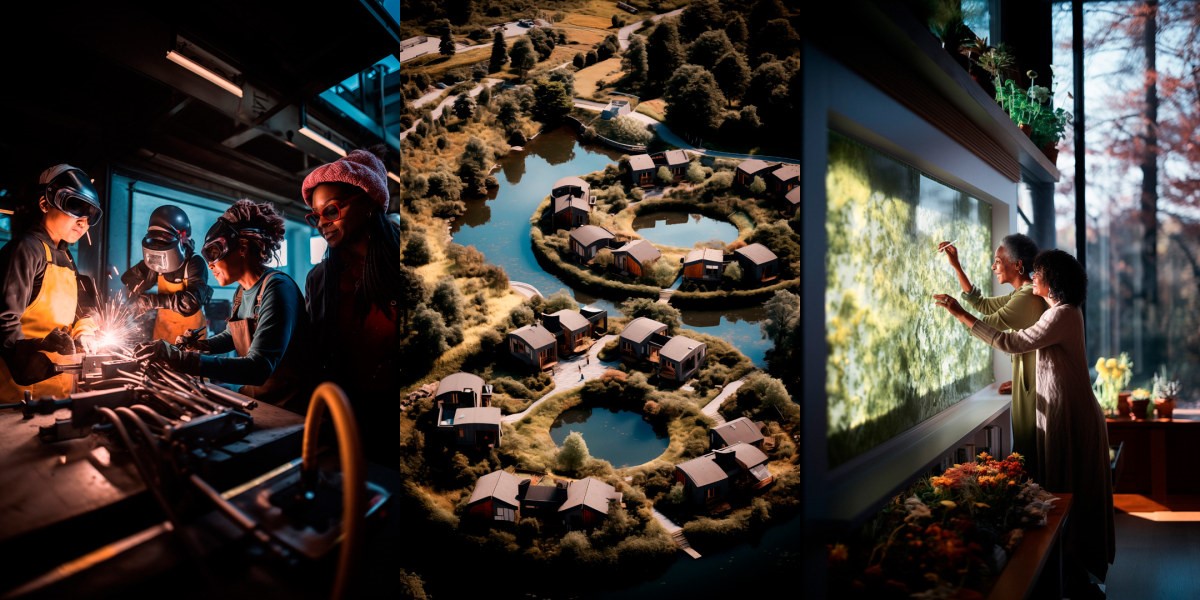
The resilient community
Now let’s imagine something outside of our megacities and VR headsets. Ikea found that one-fifth of us would like to live on our own power and grow our own food. Already, we’re seeing communities develop around senior living and dedicated solar microgrids. Into the future, Ikea imagines how people might sidestep social fragmentation by living with their peers, while leveraging biodesign to make these communes resilient and largely self-sufficient.
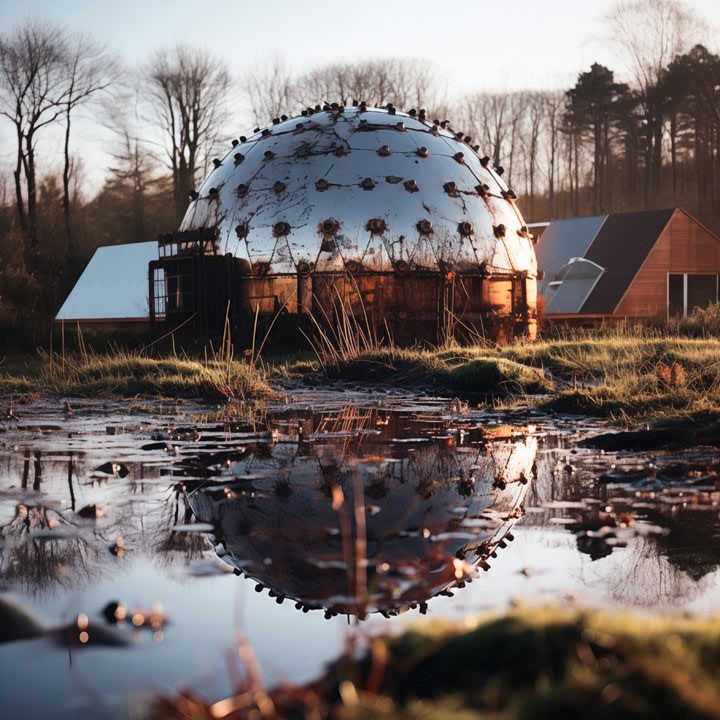
In their example, a divorcee named Angela joins a women-only housing collective in Massachusetts. She learns skills like welding, helps develop the community’s anaerobic waste digesters, and installs bio-solar wallpaper to generate power in housing units.
“Thinking about society working closer to living systems,” says Jeansson. “Not just human living systems, but systems like bacteria, and what that may mean for the way we live our lives.”
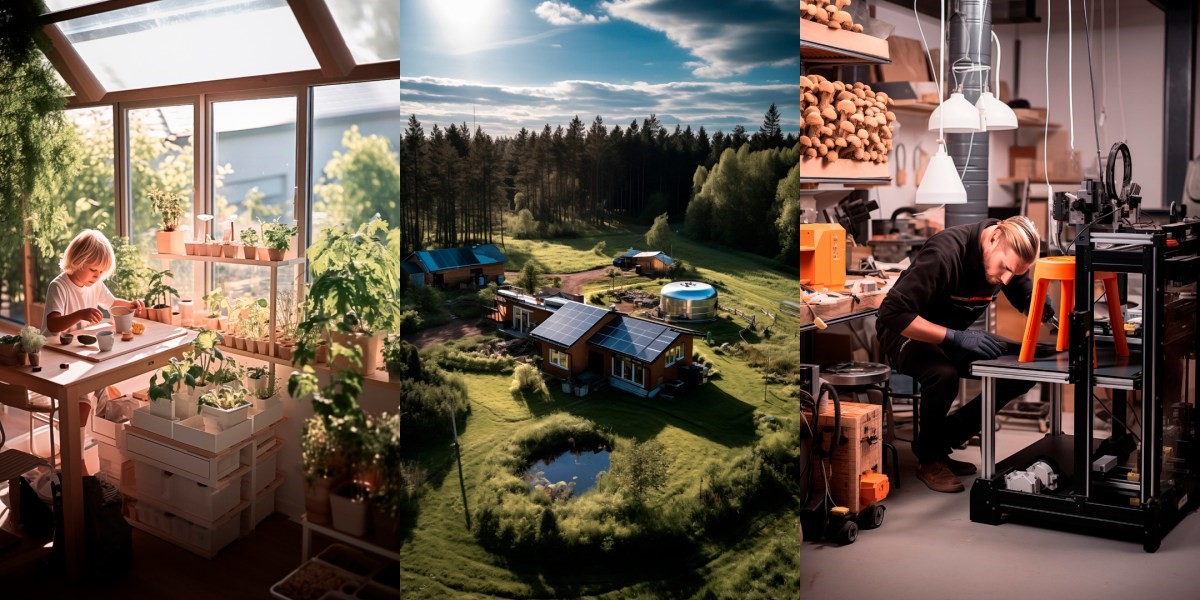
The nurtured home
In Ikea’s last concept, we meet Jamie, a non-binary school teacher with two partners and two children who lives in a farmhouse in northern Sweden. It’s an idyllic life, but Jamie’s family has a lot of rules to follow thanks to new governmental regulations that require people to live in harmony with the environment.
Ikea depicts its “nurtured home” as an eco-friendly Jetsons on a farm. Floors and kitchen surfaces are self-cleaning, but people need to take mist baths to save water. Gaia, the home’s AI, might seem like a helpful assistant (or a Big Brother presence), as it analyzes everything from their groceries to their energy use to their health. And when family comes to visit—a rarity in an age with less travel—Jamie will 3D print extra furniture from mushroom compounds because no one owns excessive objects.
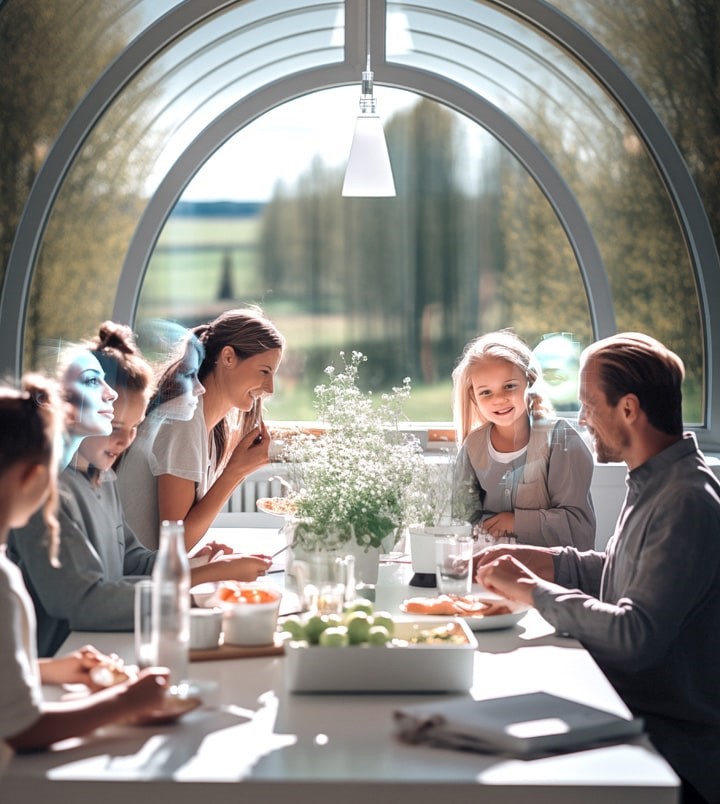
This vision of family life may look ideal from the outside, but it exists in a world that’s regulated to the point where everyday indulgence like food and travel can seem sinful. “someone living in it might feel a bit locked,” says Jeansson.
In truth, Ikea’s vision of the resilient community, with its algae wallpaper, isn’t so different from its nurtured home, with its 3D-printed mushroom furniture. In both scenarios, people are getting by despite being largely isolated from the grid, making incredible sacrifices while sipping on local resources to better support our planet.
“It’s the same outcome, but it comes from different contexts,” notes Jeansson, comparing the opt-in feeling of moving to a commune with a government-mandated mist bath. “But it might feel very different for people living in those two worlds.”
(16)

